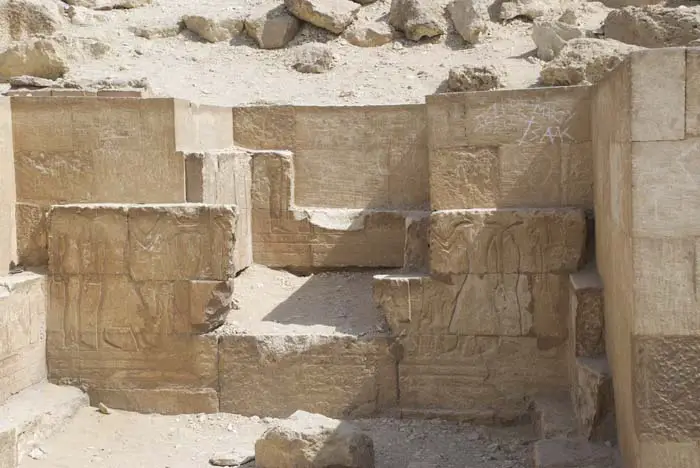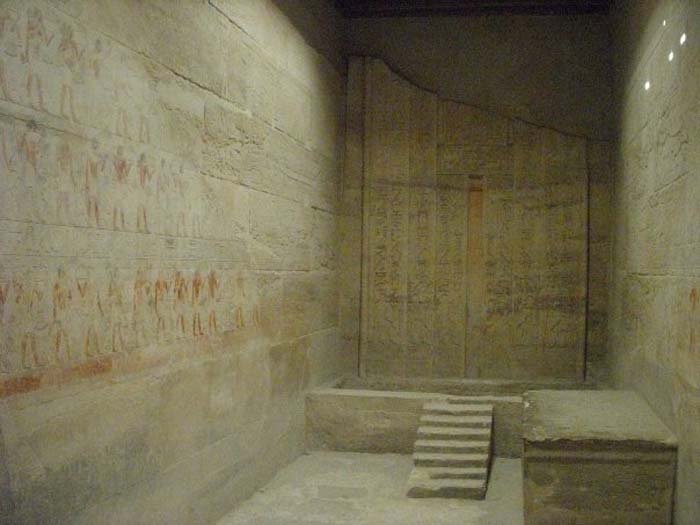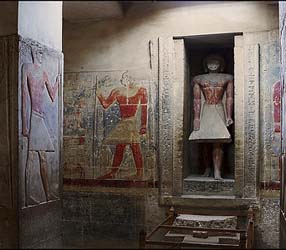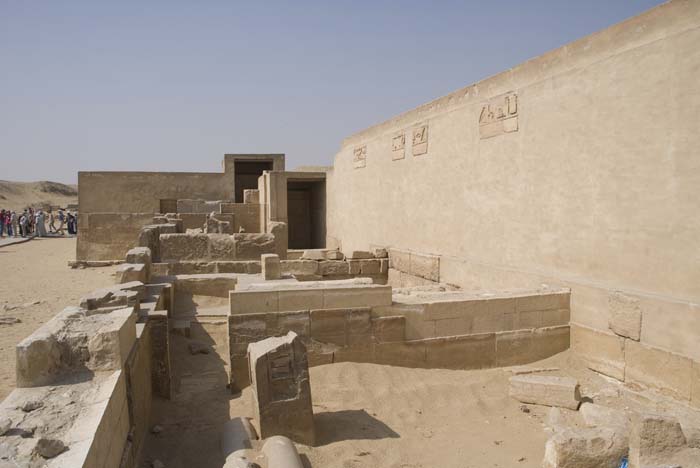Ancient Egyptian Mastabas
The mastaba was used by the early pharaohs of Pre- and Early-Dynastic periods, but faded out of royal use in favor of the pyramids. The word comes from the Arabic word for "bench," and it was a rectangular structure that served as a tomb. The mastaba continued to be used by Egyptians who were not of the royalty.
What is a Mastaba?
In ancient Egyptian, the term for a mastaba meant "eternal house", referring to the final resting place of the dead. The word mastaba derived from an Arabic word meaning "bench", and indeed, from far away, the structure does look like a bench. It had a flat roof and a rectangular shape with sloping sides facing outward. It was constructed with stone or bricks made of mud from the Nile.
Mastabas were tombs and they began as burial sites for royals, including pharaohs, back in the earliest dynasties of ancient Egypt. As the Old Kingdom commenced, the pharaohs started to be buried in pyramids instead of mastabas. Commoners continued using the mastaba as a burial house for over a thousand years.
It is not an exaggeration to say that the ancient Egyptians were preoccupied with death, and in particular, the afterlife. This belief is highlighted in most of the Egyptian architecture, from the pyramids on down. Incredible amounts of work were put into tomb building, with the pyramids obviously being the pinnacle of this. The Egyptians believed that the soul could not live on in the afterlife if its body was not preserved and free from corruption back on Earth.
Beginning in the Predynastic Era and continuing into later dynasties, the Egyptians worked at developing better and more complex methods of burying their dead. The primary objectives in housing the dead was preservation of the body and protection from the outside.
The very first method used by the ancient Egyptians was a simple pit dug into the sand. The body was placed in the grave along with personal effects or useful items for the afterlife. Due to contact with the dry desert, the body was naturally preserved with mummification, however, it was not as protected.
Thus the mastaba came along. This was the first tomb structure built by the Egyptians. Mastabas gave the body protection from wild animals and potential grave robbers, however, they did not preserve the body as naturally as sand burial. That led the Egyptians to develop a system of mummification through artificial means. Up until sometime in the Old Kingdom, only royalty and high-ranking officials would be buried in the mastaba.
Structure Of A Mastaba
The structure of the mastaba may have come from Mesopotamian ideas, as this civilization was constructing similar buildings and structures at the same time. Built from Nile mud bricks or stone, the mastaba had a distinct bench-like shape with a flat roof and sloping sides.
Mud bricks from the Nile were used exclusively in the beginning of mastaba construction, and they made up most of the construction even when stone became available. The builders would build the important areas of the tomb with stone and then construct the rest with mud bricks. This likely had much to do with the easy availability of mud-bricks and the fact that the mastaba eventually became a commoner's tomb rather than a royal one.

© future15pic - Mastaba Blocks
The mastaba usually stood as high as 30 feet and stretched about four times longer than its width. The location of the mastaba had much to do with the Egyptians' afterlife beliefs. Building it with a north-south position made sure that the soul would be granted entry to the afterlife.
The part of the mastaba that stood above ground contained a small chapel for offerings. This chapel also had a fake door. During the body's rest, the family of the deceased and priests continued to bring food and various other offerings. This was part of the ancient Egyptians' belief that the soul could use items brought to its tomb on Earth to sustain its existence in the afterlife.
The interior of the mastaba consisted of a deep chamber hollowed out of the ground and reinforced with stone or a combination of stone and brick. The chamber that contained the body was dug as deep as possible, even past the bedrock. It was then lined with wood. Another chamber was hidden deep within to keep items for the soul safe. Items might be anything from food, clothes and beer, to personal, precious effects from the person in life.

© viajeyturismoaldia - Mastaba Chamber
Another hidden object deep within the mastaba was a statue of the person. This was usually well-hidden inside the masonry to protect it. In the hidden chamber, small openings were cut into the walls at the very top. These holes allowed the soul to come and go, which was something essential for its continued existence. Incense, spells and rituals were often performed with the intent of reaching the statue.

© Guillén Pérez - Mastaba Statue
Architectural History Of Mastabas In Ancient Egypt
In the earlier days of ancient Egypt, the mastaba was the standard tomb for royalty, the pharaoh and other members of an elite social status. Abydos was the site of numerous empty tomb monuments, called cenotaphs, while Saqqara served as the site of the royal cemetery, where it could overlook the capital city of Memphis as the time. The mastaba evolved during this early period of Egyptian civilization.
The First Dynasty saw mastaba construction copying a basic house plan and consisting of several rooms. The central room housed the sarcophagus, while the other rooms served as storage space for the numerous funeral offerings. The entire structure was constructed in a shallow pit, while the larger superstructure spanned an even larger area.

© Norman Walsh - Mastaba Wall Construction
In the Second and Third Dynasties, the stairway mastaba became common. This type of mastaba had a sunken burial chamber and offered access to the top of the structure through a stairway.
By the Third Dynasty, the mastaba was left behind by the pharaohs in favor of pyramids. Regular Egyptian nobility and commoners continued to bury their dead in the mastaba. Hundreds of the bench-like tombs can be found on the Giza Plateau, not far from the pyramids.
By the Fourth Dynasty, tombs cut into rock cliffs started to appear. These were largely built in Upper Egypt, which was to the south where more rocky geography existed. The reason for these tombs was due to grave robbers. The distinct mastaba shape was used here too, with the addition of a chapel for offerings and a vertical shaft.
In the Fifth Dynasty, even more elaborate chapels were added to the mastabas. These had numerous rooms, a hall decorated with columns and a hidden chamber. The burial room was constructed far below the south side of the mastaba. It connected to a stairway leading up via a slanted passage, and emerged in the main court of the tomb.
The New Kingdom largely saw the end of the mastaba, completely overtaken by the pyramid built over a burial chamber.
Facts About The Ancient Egyptian Mastaba
- The first mastabas are largely found at Giza along with the pyramids.
- Mastaba comes from an Arabic word for "bench" and translated to "eternal house" in ancient Egyptian.
- Pre- and Early-Dynasties favored the mastaba for the pharaoh and social elite.
- By the time of the Old Kingdom, most royalty and the pharaohs used pyramids instead of the mastaba, but it continued to be used by other Egyptians.
- The mastaba fell out of favor completely by the time of the New Kingdom.

